6 Best Free Web Development Courses for 2025: Over 900 Hours of Learning
Learn how to build websites in this guide with the best web development courses.
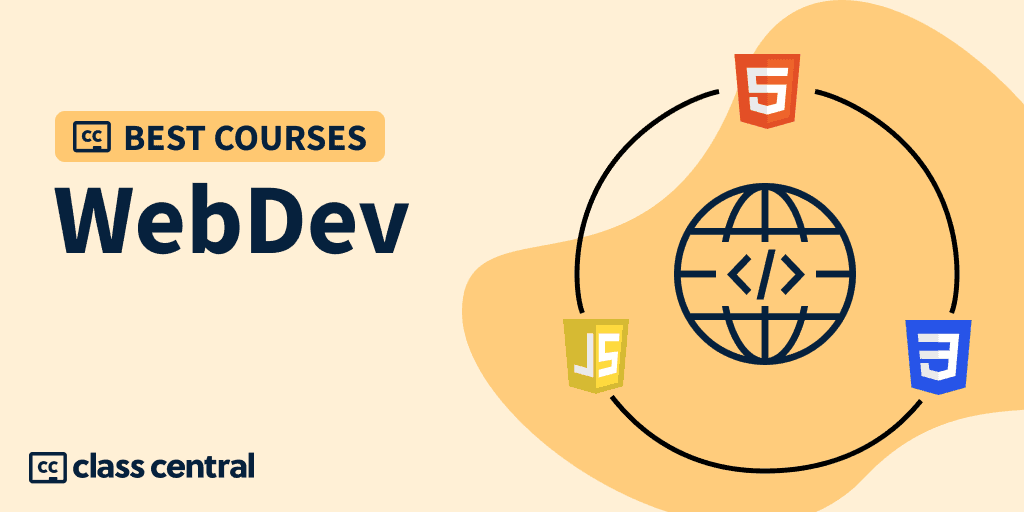
Web development involves designing, coding, and maintaining websites using a variety of programming languages such as JavaScript, HTML, CSS, PHP, and more. Three of the most important languages used in web development are HTML, CSS, and JavaScript, which are universally used for creating front-end applications.
Everyone learns differently, and I hope to provide you with a variety of courses to learn web development from start to an intermediate level.
Class Central recommends Responsive Web Design by freeCodeCamp as the best way to start learning HTML and CSS, and Foundations: Web Development by The Odin Project as a complete learning path to become a full-stack web developer with a follow-up course on full-stack JavaScript. Both platforms are interactive and self-guided, where you actually code things yourself.
If you need more guidance, with the presence of an instructor, Learn HTML and CSS and Learn Javascript by Scrimba will provide you with lectures and an interactive platform to code along. However, they may not be suitable for complete beginners.
If you wish to start your journey in web development, read on to see my top picks!
Click on the shortcuts for more details:
- Top Picks
- What is Web Dev?
- Why You Should Trust Us
- Courses Overview
- What’s Next
- How We Made Our Picks and Tested Them
Here are our top picks
Click to skip to the course details:
What is Web Dev?
Websites can range from single static pages of plain text to complex interactive web applications. Web development requires a basic understanding of HTML, CSS, and JavaScript, which are the three technologies at the heart of the web.
Web development is a rapidly growing industry. The U.S. Bureau of Labor Statistics predicts a 16% increase in web development job opportunities from 2022 to 2032, much faster than the average growth rate for all occupations.
For these reasons, JavaScript is the most popular language, and HTML/CSS comes in second, according to the Stack Overflow Developer Survey. Developers are often paid over $70K yearly.
Why You Should Trust Us
Class Central, a Tripadvisor for online education, has helped 60 million learners find their next course. We’ve been combing through online education for more than a decade to aggregate a catalog of 200,000 online courses and 200,000 reviews written by our users. And we’re online learners ourselves: combined, the Class Central team has completed over 400 online courses, including online degrees.
I (Kinjal) started learning web development in January 2022 with Mozilla’s front-end course, despite having no prior knowledge of HTML and CSS. Although I had some experience with Python, the prospect of learning HTML/CSS felt daunting and overwhelming, like any other new language. I was even intimidated by it.
Around the same time, Class Central announced an online bootcamp with Ramon and Jess as mentors. I enrolled in the bootcamp with the intention of returning to Mozilla or The Odin Project once I completed it. I nearly finished the Responsive Web Design bootcamp before moving on to learning about responsive layouts and design. I practiced my skills by replicating parts of websites I came across, using what I had learned.
While creating these webpages, I frequently referred back to Mozilla’s documentation, Kevin Powell, Web Dev Simplified, FollowAndrew, and a few other channels to gain a better understanding of concepts that still troubled me. These channels are among the best resources for learning web development, and I recommend subscribing to them for the latest updates and insights on HTML/CSS and JavaScript.
If you do need more help in understanding responsive layouts and positioning, I definitely recommend looking at the Best Free CSS Layout Courses.
By the end of it all, I completed parts of almost all the courses mentioned below since they provide different ways of learning things, and I fell in love with HTML/CSS. Here are examples of a few of the things I’ve created recently:
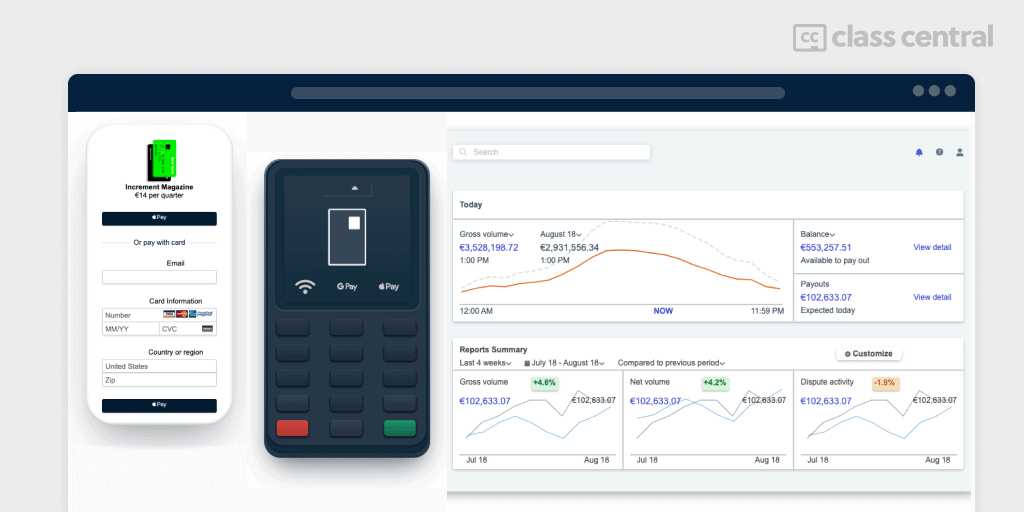
Courses Overview
- All of the courses are free or free-to-audit
- They are all suitable for beginners
- Together, they offer over 900 hours of free content.
Best Course for Beginners with Free Certificate (freeCodeCamp)
freeCodeCamp has recently updated its Responsive Web Design course to be more project-based, making it an excellent resource for beginners who want to start coding without having to set anything up on their computers. The course covers the basics of creating simple websites and CSS artwork, introducing you to HTML and CSS syntax. Upon completion, you’ll receive a free certificate.
While this course is considered one of the best resources for web design, it may not provide sufficient understanding of the concepts for some. Some exercises might feel too prescriptive, and if you have basic knowledge of HTML and CSS, exploring other courses on this list might be a better option.
To make the most out of the course, it is recommended to install an Integrated Development Environment (IDE) like Visual Studio Code and create folders with project names and files inside them. As you progress through the course, copy the entire HTML and CSS code to review later. The interactive tool provided by freeCodeCamp opens each part of a project, allowing you to enter code precisely where required. However, this approach may be too direct for some who prefer to code alone.
Once you have completed this course, if you wish to create a fairly bigger project, you can look at Frontend Development – Create a Blog with HTML, CSS and JavaScript Algorithms and Data Structures from freeCodeCamp.
| Provider | freeCodeCamp |
| Level | Beginner |
| Workload | 300 hours |
| Forum | Yes, available |
| Certificate | Yes, free |
Best Full Stack Web Development Certificate With Live Sessions and Mentoring (Noble Desktop)
If you prefer instructor-led learning, Noble Desktop’s Full-Stack Web Development Certificate offers real-time feedback and accountability that pre-recorded courses can’t match. Additionally, you get a NY State-Licensed Certificate.
What I find interesting is that this program runs both in-person (NYC campus) and online (Zoom). Even if you’re attending online, you’ll have individual attention and can see other students in the classroom. You’ll be able to interact with instructors, receive feedback, and ask questions during sessions. Plus, you’ll get access to class recordings and workbooks – pretty helpful for catching up if you miss a class or reviewing what you learned.
Key Benefits
- Small class sizes (8-15 students)
- Includes ten 1-on-1 mentoring sessions
- Free retake within one year
- Detailed class files with real-world projects
Noble Desktop knows what they’re doing – they’ve been around for over three decades providing instruction with industry experts. So you can rest assured your mentorship will not be with someone who just finished the course. Don’t take my word for it – student reviews on Yelp and Google praise their practical approach and instructor quality.
What You’ll Learn
- Front end web development with HTML, CSS, and Python
- Building and managing full stack web applications
- Deployment and version control
- JavaScript libraries, including Django, MongoDB, Node, and Express
- AWS and alternate stacks for launching websites
Flexible Schedule Options
- 17 weeks full-time (weekdays)
- 1 year part-time (evenings)
“It is a really good experience for anyone starting web development. You will get to learn everything in web development in detail, which is just great and amazing!!” – Christina Obeid, Noble Desktop learner.
| Institution | Noble Desktop |
| Provider | Direct (NYC campus or Live Online) |
| Instructors | Dan Rodney, Brian McClain, Colin Jaffe |
| Level | Beginner to Intermediate |
| Workload | 420 hours (plus optional choice of 18-hour elective) |
| Rating | 4.8/5.0 (Yelp) and 5.0/5.0 (Google) |
| Certificate | NYS Licensed Certificate |
Best Instructor-led Course (Scrimba)
If you’re looking for an interactive platform to learn HTML/CSS, JavaScript, and Responsive Web Design with a variety of tutors, Scrimba is a great option. Their Learn HTML and CSS and Learn JavaScript courses offer concise, interactive lessons with practical examples. In addition, Scrimba has comprehensive courses on CSS Grid and Flexbox, as well as other programming languages and frameworks. The final project on the platform is a solo project that can be reviewed for feedback.
As a beginner, I found it helpful to complete a few projects on freeCodeCamp before moving on to Scrimba to gain practical experience in creating websites.
In this course, you’ll learn the fundamentals of HTML/CSS and JavaScript, with practical examples and the ability to push your work to GitHub and deploy it.
Scrimba’s interactive platform allows you to understand the requirements and code them yourself, with instructors helping you understand the code while they write and explain it.
Among the paid Scrimba courses, I recommend the frontend web development Career Path and also deepdive into Javascript along with a course on Responsive Web Design.
| Provider | Scrimba |
| Instructor | Per Harald Borgen |
| Level | Beginner |
| Workload | 14 hours (HTML/CSS & JavaScript combined) |
| Certificate | None |
Best Text-Based Course for All Levels (Mozilla)
Who better to teach web development than the developers themselves? Mozilla is one of the best platforms for learning web development through simple exercises and in-depth reading materials. While videos and interactive platforms can be helpful, if you’re looking for a more profound understanding of the basics of web development and beyond, I recommend exploring text-based platforms.
Although freeCodeCamp is an excellent starting point for web development, I highly recommend Mozilla’s Front-end Web Developer course. This comprehensive course covers HTML semantics, CSS, JavaScript, accessibility, performance, tools, frameworks, and even some server-side programming. After completing this course, you will have the skills and projects necessary to work as a junior developer.
The course is entirely text-based, but each module includes small challenges to apply the concepts you’ve learned. You’ll also have access to additional resources including interactive examples, quizzes, and projects to reinforce your understanding.
| Website | Mozilla |
| Level | Beginner |
| Workload | 270 hours |
| Certificate | None |
Best Full-stack Learning Path (The Odin Project)
The Odin Project offers two options for learning web development: you can begin with the Foundations: Web Development course, which includes small exercises and projects covering HTML, CSS, and JavaScript, or you can take the entire course and become a full-stack developer. After completing the Foundations course, you can move on to the Full-Stack JavaScript course. If you prefer to learn a different programming language, The Odin Project also offers a full-stack course with Ruby on Rails.
The Odin Project relies heavily on MDN Documentation and requires knowledge of Github to push your projects. The courses prepare you to work as a junior full-stack developer upon completion.
In this course, you’ll learn:
- Fundamentals of HTML/CSS and Javascript
- Intro to git and GitHub since projects require you to push your challenges after completion
- Move at your own pace and proceed to learn full-stack development with either Ruby or Javascript.
The Odin Project requires you to do a lot of reading and then complete small challenges once you are familiar with the concepts. You will also come across some YouTube videos and MDN Docs that you’ll have to watch or read to master certain concepts.
They have their own Discord Channel, where you could ask questions if you are stuck.
| Organization | The Odin Project |
| Level | Beginner |
| Workload | 300 hours |
| Certificate | None |
Best University-level Course with Paid Certificate (John Hopkins University)
The free-to-audit HTML, CSS, and Javascript for Web Developers course, offered by Johns Hopkins University on Coursera, goes beyond teaching the fundamentals of web development. It provides hands-on experience in building real-world applications, allowing students to apply their knowledge practically. The course covers the “why” behind all concepts, making it valuable for both beginners and experienced developers. By the end of the course, you will have created a responsive website that functions seamlessly on all devices.
What you’ll learn:
- Creating modern web pages with HTML, CSS, and Bootstrap framework
- Making responsive designs that adapt to different screen sizes
- Building a fully functional web application using JavaScript and Ajax
- Practical application through a project for a local business in Baltimore.
Note that this is an old course, but the fundamentals are solid, and that matters most. It uses an older version of Bootstrap (Bootstrap 3), but if you understand version 3, you can easily work with the latest version. The principles behind web development remain largely the same.
Additional Information
The course is one of Class Central’s Most Popular Online Courses of All Time and is part of the Ruby on Rails Specialization, but you can take it independently. So you don’t have to worry about the rest of the specialization to complete this course!
Both of Chaikin’s courses, HTML, CSS, and Javascript for Web Developers, and Single Page Web Applications with AngularJS, made it to the #1 Top Rated Course spot on Coursera back in 2016.
| Institution | John Hopkins University |
| Provider | Coursera |
| Instructor | Yaakov Chaikin |
| Level | Beginner |
| Workload | 40 hours |
| Rating | 4.7/5.0 (16K) |
| Exercises | Practice exercises, graded quizzes, and peer-graded assignments (paid) |
| Enrollments | 1.14M |
| Certificate | Paid |
Honorable Mentions
You should definitely check out Kevin Powell’s course on responsive layouts. I’d also like to recommend Colt Steele’s course, which covers the basics over several videos, and Coder Coder, which offers helpful resources for learning HTML/CSS and Javascript through projects.
What’s Next
Once you’ve completed these courses and have a good understanding of the concepts, it’s essential to put them into practice. Practicing on any website can be helpful for improving your HTML/CSS and Javascript skills.
For example, I’ve tried recreating parts of a website like stripe.com without looking at their code or console can be an excellent exercise. There are also many other websites where you can practice, such as Frontend Mentor Challenges, Befront, Codepen Challenges, CSS Battle, and moderncss.dev.
How We Made Our Picks and Tested Them
Trying to find “the best” can be daunting, even for those of us who live and breathe online courses. Here’s how I approached this task.
First, I combed through Class Central’s Catalog and the internet to find a variety of free and paid open courses, some with certificates. You don’t need to enroll in a university to learn about Web Development.
When choosing courses, I considered the following factors:
- Renowned Institutions: I looked for recognized institutions in Web Development
- Instructor experience: I sought instructors with extensive experience in Web Development and engaging presentation styles
- Popularity: I checked numbers of enrollments and views to find popular courses
- Course content: I examined courses that covered a range of topics and presentation styles, including the basics and more advanced topics. I watched some course videos to sample courses I hadn’t already taken
- Learner reviews: I read learner reviews (when available) to get a sense of the quality of each course, leveraging the Class Central database with its thousands of course ratings and reviews written by our users as well as available course provider reviews.
Then, I defined the scope for these recommendations. A Web Development course can cover various topics, so I chose top courses from a range of sub-fields.
Ultimately, I used a combination of data and my own judgment to make these picks. I’m confident these recommendations will be a reliable way to learn about Web Development.
Fabio revised the research and the latest version of this article.

Kinjal Vora



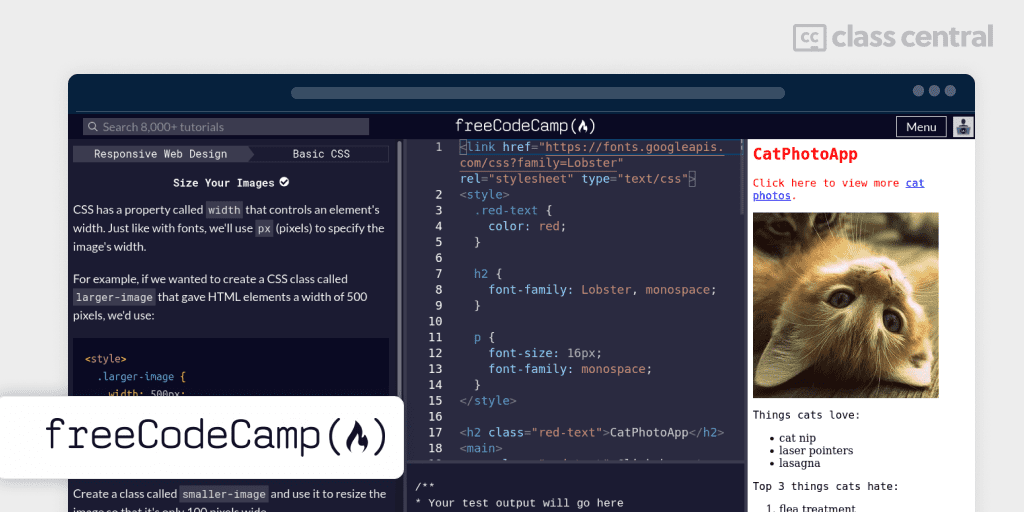

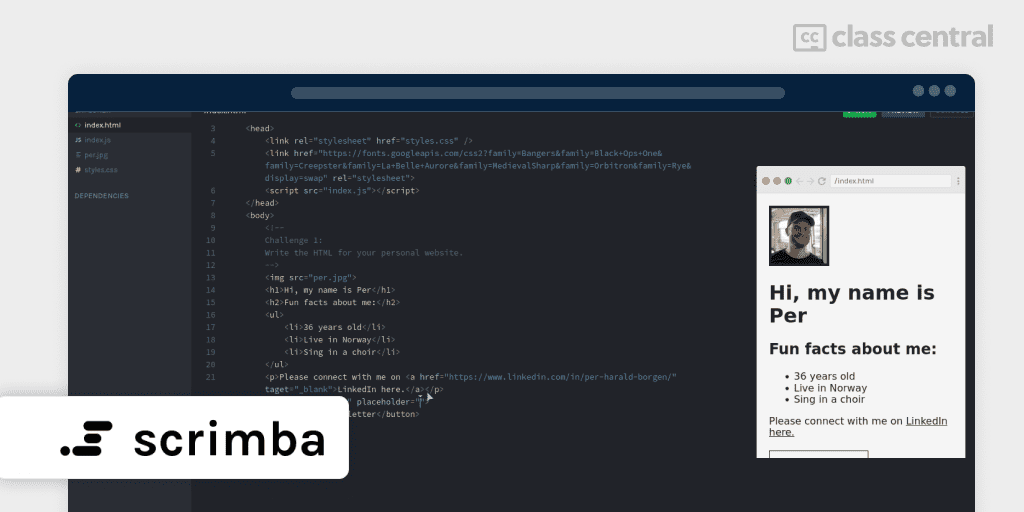
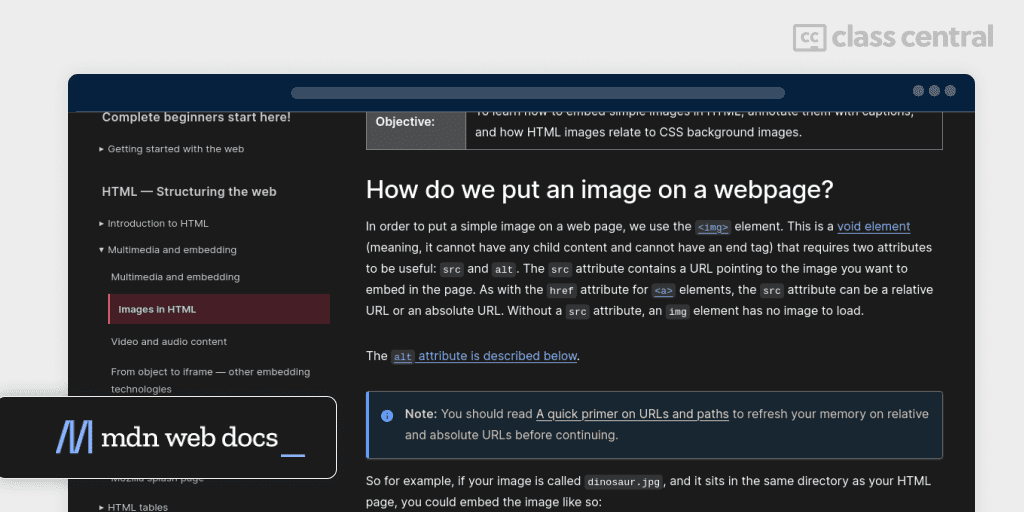
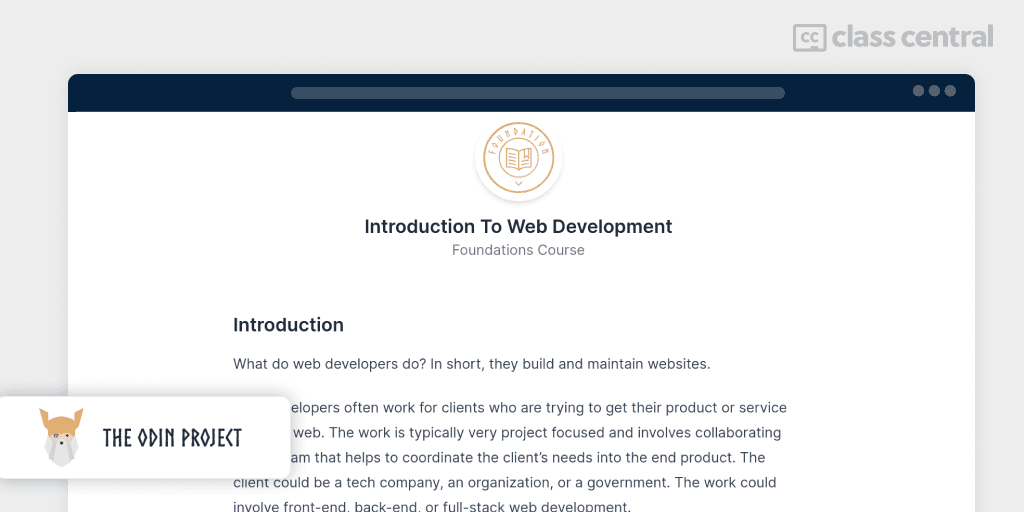
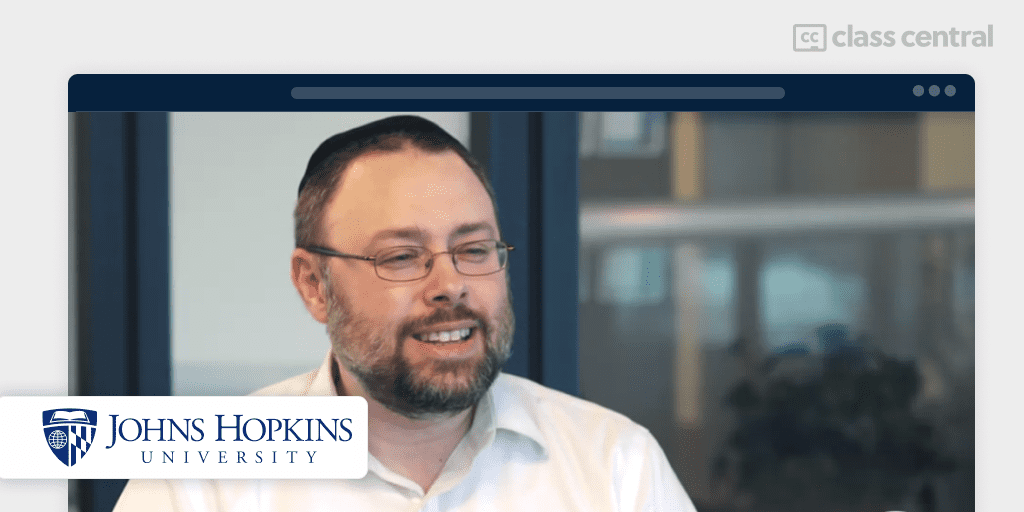
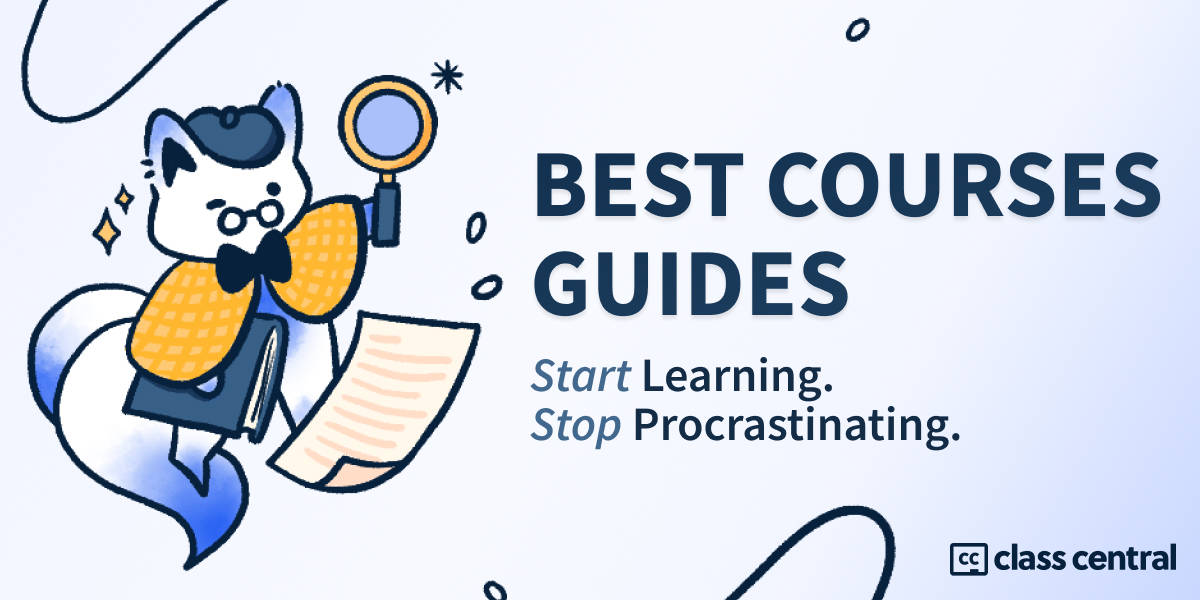






Gasinu Felix
Thanks for your help
Sonal
Love this initiative to recommend 10 best courses for skill development.
I wonder if you research in selecting these also include accessibility for disabled.
There are over 1 billion disabled in this world and most of them rely on assistive technologies to access online material. I see that most of these classes are on accessible platforms, still, accessibly of the content is equally important. I love unbiased and authentic evaluation by Class Central.
I can attest that your choice #1 and #10 are both accessible courses, as, I know of quite a few visually challenged learners have completed these class and based on their recommendation the course providers have actually modified the courses. Both classes have originated from Cambridge, MA.
sahand
Hello,
Thank you for the comprehensive list!
Can you clarify why Helsinki university’s Full Stack-Open course didn’t make the list?
Kinjal
The full stack course by Helsinki would be on top of the list for a full-stack best course guide. But since this is more about getting acquainted with the technologies especially HTML/CSS and Javascript, it is not mentioned in the list.
I hope that clarifies it 🙂
Charles
I like your article. Clear, concise, and helpful in guiding me to choose appropriate course for web-development.
Nassar Salih
Thanks so much dear Kinjal Vora for your nice article .Realy I benefit much from it. Insha’Allah I will follow your advices and begin from top to end .Thanks again Mr Kinjal Vora may Allah belss you .
Nihal HU
How i s meta’s front end development course on coursera compared to freecode camp and the others?
Fabio Dantas
Meta’s course on Coursera is well-structured and includes video lectures, quizzes, and projects, and offer a certificate upon completion (paid). This could be valuable if you’re looking for a more formal educational experience or a credential from a well-known tech company.
freeCodeCamp and The Odin Project, on the other hand, are known for their FREE, self-paced approaches (with little to no video instruction besides their YouTube content). freeCodeCamp’s responsive web design course focuses on HTML, CSS, and responsive design principles with a hands-on, project-based methodology. The Odin Project often covers a broader range of web development topics, including both front-end and back-end technologies, and emphasizes learning through real-world projects and independent problem-solving.
sithmi samarasekara
I’m 15 years old. From Sri lanka. I followed graphic & web(HTML,CSS) design course. Can I follow these courses?
If yes, how to follow and how much ?
Thanks
Sithmi
Fabio Dantas
You can definitely learn from the courses in this guide. There are no age requirements, so even if you’re under 18, you can start learning web development from them. Good luck Sithmi!